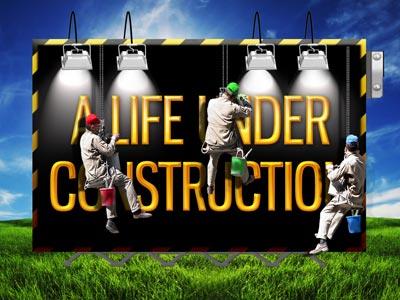-
A New Perspective
Contributed by Melvin Maughmer, Jr. on Jul 3, 2014 (message contributor)
Summary: Stop looking at your flesh. Let Jesus touch you and change your perspective.
“A New Perspective”
By
Bishop M.L. Maughmer, Jr.
Luke 13:10-17 “And he was teaching in one of the synagogues on the sabbath. And, behold, there was a woman which had a spirit of infirmity eighteen years, and was bowed together, and could in no wise lift up herself. And when Jesus saw her, he called her to him, and said unto her, Woman, thou art loosed from thine infirmity. And he laid his hands on her: and immediately she was made straight, and glorified God. And the ruler of the synagogue answered with indignation, because that Jesus had healed on the sabbath day, and said unto the people, There are six days in which men ought to work: in them therefore come and be healed, and not on the sabbath day. The Lord then answered him, and said, Thou hypocrite, doth not each one of you on the sabbath loose his ox or his ass from the stall, and lead him away to watering? And ought not this woman, being a daughter of Abraham, whom Satan hath bound, lo, these eighteen years, be loosed from this bond on the sabbath day? And when he had said these things, all his adversaries were ashamed: and all the people rejoiced for all the glorious things that were done by him”.
Teaching:- Here we have a very familiar part of history Jesus heals a woman that has been bent over for 18 long years and He heals her on the Sabbath day which according to man’s tradition was against the law. The Sabbath was made for man not man for the Sabbath, Mark 2:27 & John 5:9, so healing her on the Sabbath was no breaking of God’s law but of man’s traditions. God wants to mess with your tradition and move you into another realm. This part of history is a good sermon, but can I take you a little deeper today.
The Bible says “And he was teaching in one of the synagogues on the sabbath” The first synagogues may have been built by Jews held captive far from the temple during the Babylonian Exile in the sixth century B.C., but synagogues were important religious and social institutions in the time of Jesus. The original Greek word synagogue means merely "a place of meeting." In the Jewish world synagogues were second only to the temple in Jerusalem itself as religious institutions. They also served as schools of religious instruction and communal halls for civic functions under the direction of a council of elders. Typically, a synagogue was a small structure built on a rise above the neighboring houses. Opposite the entrance, a portable ark contained the scrolls of the Law and the Prophets. In front of it, facing worshipers, were the "chief seats" for religious leaders. The five-part service included prayers, psalm-singing, blessings, readings from the Scriptures, and commentaries on the sacred passages, but there were no sacrifices.
THE SYNAGOGUE SERVICE consisted of recitation of the Jewish Shema, "Hear, O Israel: Jehovah our God is one Jehovah: and thou shalt love Jehovah thy God with all thy heart, and with all thy soul, and with all thy might" (Deut. 6:4, 5), This was accompanied by sentences of praise to God called Berakot because they began with the word "Blessed." Baruch HaSem Adonai – Blessed be the name of the Lord. Following the Shema was a ritual prayer, concluding with an opportunity for individual silent prayer on the part of the members of the congregation. The reading of the Scriptures, which came next, began with special sections of the law which were assigned to holy days; but as time went on the entire Pentateuch was divided into sections which gave a fixed cycle of one hundred fifty-four lessons to be read in a definite period of time. The Palestinian Jews read through the Pentateuch every three years, whereas the Babylonian Jews completed the reading in one year. The Prophets were also used, as Jesus' reading in the synagogue shows Luke 4:16. Probably on that occasion Jesus Himself selected the reading. A sermon followed the reading of the Scripture, explaining the portion which had been read. The sermon in the synagogue at Nazareth was in full keeping with the regular procedure of the day. The sermon was closed with a blessing, pronounced by some priestly member of the congregation. If no person with priestly qualifications was present, a prayer was substituted for the blessing. The Jews call it a synagogue we commonly call it church.
Somebody might be saying what is all of that for? I had to include all of that because I wanted you to see the structure of how everything was set up. Although not exactly like us but very similar to our idea of a church service.
Understand this here is Jesus teaching in the synagogue on the Sabbath, generally a weekly day of rest or time of worship. Most people come to church weekly on Sunday only. We call them Sunday morning saints you only see them on Sunday morning. You don’t see them at Bible Class or Prayer meeting. You don’t see them at general clean-up you only see them on Sunday morning.

 Sermon Central
Sermon Central



